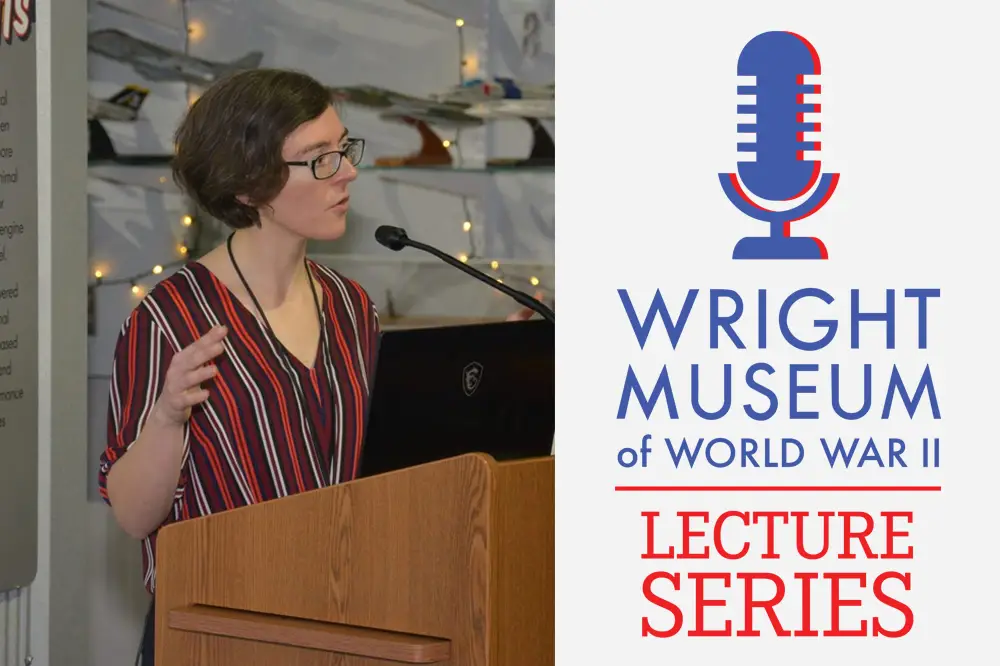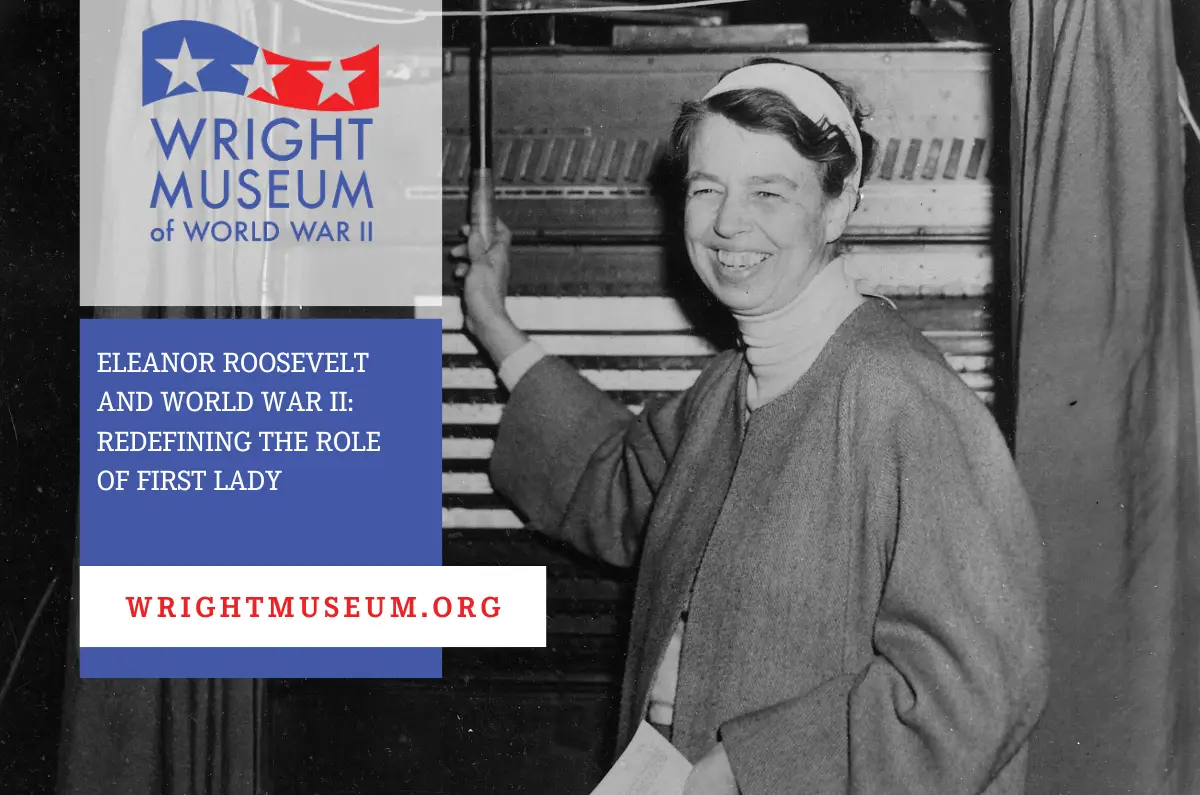The Wright Museum is excited to begin its 2024 Lecture Series this month. Join us every Tuesday in June from 7:00 to 8:00 p.m. in the DuQuoin Education Center on the first floor of the museum. Our doors open one hour before each lecture begins, and we strongly encourage you to register early for these popular programs. Find more information on registration, cost, and more by visiting this page.
This June, learn about air operations close to home here in New Hampshire or about what happened after Allied forces stormed the beaches of Normandy. Incredible stories from the perspective of a war correspondent on the front lines and his wife keeping the home fires burning give unique perspective on the war. We even have the amazing tale of the only known person to serve in both the United States Army and the Soviet Red Army in World War II.
It’s a month you don’t want to miss at the Wright Museum!
Here’s a little more information to help you plan your Tuesday nights with us at the Wright Museum.
June 4 – Grenier Field and D-Day
Leah Dearborn, associate director of the Aviation Museum of New Hampshire, kicks off our season with a look at the heroic role Grenier Field, now known as Manchester Airport, played in transporting members of the 8th Airforce as well as weather squadrons sent to Greenland and Labrador to help predict the weather across Europe, including D-Day.
When we think of D-Day, we think of France, of fighting forces long distances from here in the United States, but places like Grenier Field served important roles in forward operations. Join us and learn more about the specific ways people in New Hampshire impacted the war effort.
Make your reservation to attend now!
June 11 – War Fronts Home Fires
If you’re familiar with our museum, you know we recognize that those at home were a vital part of the war effort and ensured the home front remained strong, resilient, and ready to welcome those fighting in the war back home again. On June 11th we will have the chance to hear about one New Hampshire husband and wife who chronicled the war fronts and kept the home fires burning throughout World War II.
Joe McQuaid was a World War II newspaper correspondent, covering American and British front lines throughout the war, including D-Day and the Battle of the Bulge, and he even went toe-to-toe with General George S. Patton. While he was gone, his wife Peg dealt with food, oil, and gasoline rationing while raising the couple’s two small children. Their stories, both separate and together, are a compelling example of the love, sacrifice, and hope that millions of Americans experienced during the war.
Sign up to attend here!
June 18 – Break Out from Normandy
Join Lieutenant Colonel (U.S. Army Retired) Ron Janowski, a 1976 graduate of the United States Military Academy at West Point and a 2013 Master of Military History from Norwich University, for a fascinating look at what happened after the Allied landings in Normandy. Learn about the initial challenges Allied forces faced from the need to take the city of Caen in the east to the dense hedgerow that stymied efforts to advance in the west. Experience the efforts led by General Omar Bradley to launch a major breakout through a focused approach to victory on the narrow western front of St. Lô. It’s the perfect accompaniment to our special D-Day exhibit this year.
Commemorate the 80th anniversary of D-Day by attending this fascinating lecture.
June 25 – A Hero of Two Nations
The Wright Museum’s very own Executive Director Peggy Hennelly-Maniates will finish our June lecture series with a presentation on the only known American soldier to have served in combat with both the United States Army and the Soviet Red Army. “A Hero of Two Nations” follows the story of this man’s incredible journey from Mission Albany, the airborne landings of the 101st Airborne Division on June 5-6, 1944, to his capture by the Germans and time spent in the east as a prisoner of war. Daring, though unsuccessful, attempts to break free followed by eventual escape from the German Stalag III-C in January 1945 led to a stint with a Soviet tank battalion. After being wounded and evacuated, the soldier eventually made his way back to the United States in April 1945. It’s a riveting story that will keep you on the edge of your seat—a true don’t-miss.
Join us for our last June lecture and discover this little-known hero!





